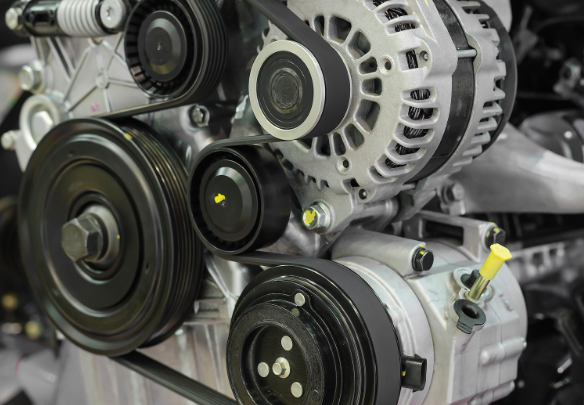Last Updated on November 25, 2022 by mdmtool
There are several critical differences between dynamos and generators. Dynamos are typically used to generate electricity for small devices like flashlights, while generators generate electricity for larger devices like power tools or appliances. Dynamos usually use mechanical energy to generate electricity, while generators can use either mechanical or chemical energy. Dynamos typically have a shorter lifespan than generators.
What Is Dynamo?

The word “dynamo” is derived from the Greek word “dynamis,” which means “power”. Dynamo is an electrical machine that converts mechanical energy into direct current electricity. It consists of a rotating magnetic field that produces an electric current in the armature winding. The main advantage of a dynamo over other DC generators is that it can be used to run an electric motor and produce electricity.
What Is Generator?

The word “generator” is derived from the Latin word “generare,” which means “to produce”. The generator is an electromechanical device that converts mechanical energy into electrical energy. It basically consists of three parts:
- The rotor is the rotating part of the generator and contains a coil of wire that spins in a magnetic field.
- The stator is the stationary part of the generator and contains a coil of wire wrapped around a metal core
- The frame is the housing that holds the rotor and stator in place.
Types Of Generators
Generators are classified into two types: AC generators and DC generators.
- AC generators produce alternating current (AC),
- DC generators produce direct current (DC).
Difference Between Dynamo And Generator

- Energy type: A generator is a machine that converts mechanical energy into electrical energy, while a dynamo is a machine that converts mechanical energy into direct current electricity.
- Type of current: Generators has alternating current, while a dynamo has Direct current.
- Use: Generators are used to produce electricity. Dynamo are used to convert mechanical energy into electrical energy
- Working principle: A generator’s working principle is based on Faraday’s law of electromagnetic induction. When the coil is rotated in a magnetic field, the generated EMF opposes the change that produces it. The working principle of a dynamo is based on the principle of electromagnetic induction.
- Current conversion: Current of generator is converted from AC to DC. While, in dynamo the current is not converted.
- Efficiency: Generators are more efficient than dynamos.
- Maintenance: Dynamos can be more difficult to maintain and may require more frequent servicing. On the other hand, generators are typically easier to operate and maintain. Still, they are less efficient than dynamos and may need more fuel to generate the same amount of power.
What Is The Working Principle Of A Dynamo?
The working principle of a dynamo is based on Faraday’s laws of electromagnetic induction. It consists of a rotating coil of wire placed in a magnetic field. When the coil is rotated, it produces an electric current.
What Is The Working Principle Of A Generator?

The working principle of a generator is based on the principle of electromagnetic induction. It consists of a rotating coil of wire placed in a magnetic field. When the coil is rotated, it produces an electric current.
How Much Power Does A Generator Make?
The amount of power that a generator can produce depends on its size and design. For example, a small generator may only generate enough power to run a few appliances, while a more significant generator can generate enough ability to run an entire home.
FAQs
Can you charge other devices with a dynamo?
No, you cannot charge other devices with a dynamo.
What are the losses in a generator?
The main losses in a generator are copper losses and iron losses. The copper losses occur due to the resistance of the windings, while the iron losses occur due to the flux leakage.
What is the efficiency of a Dynamo?
The efficiency of a Dynamo can be defined as the ratio of output power to input power. It is generally around 70-80%.
Conclusion
A dynamo is a machine that converts mechanical energy into electrical energy, whereas a generator is a machine that converts mechanical energy into either electricity or heat. The main difference between a dynamo and a generator is that dynamos convert kinetic energy into electric current, while generators can convert any form of energy into electricity. Generators are more efficient than dynamos because they can convert more types of energy into electricity.





